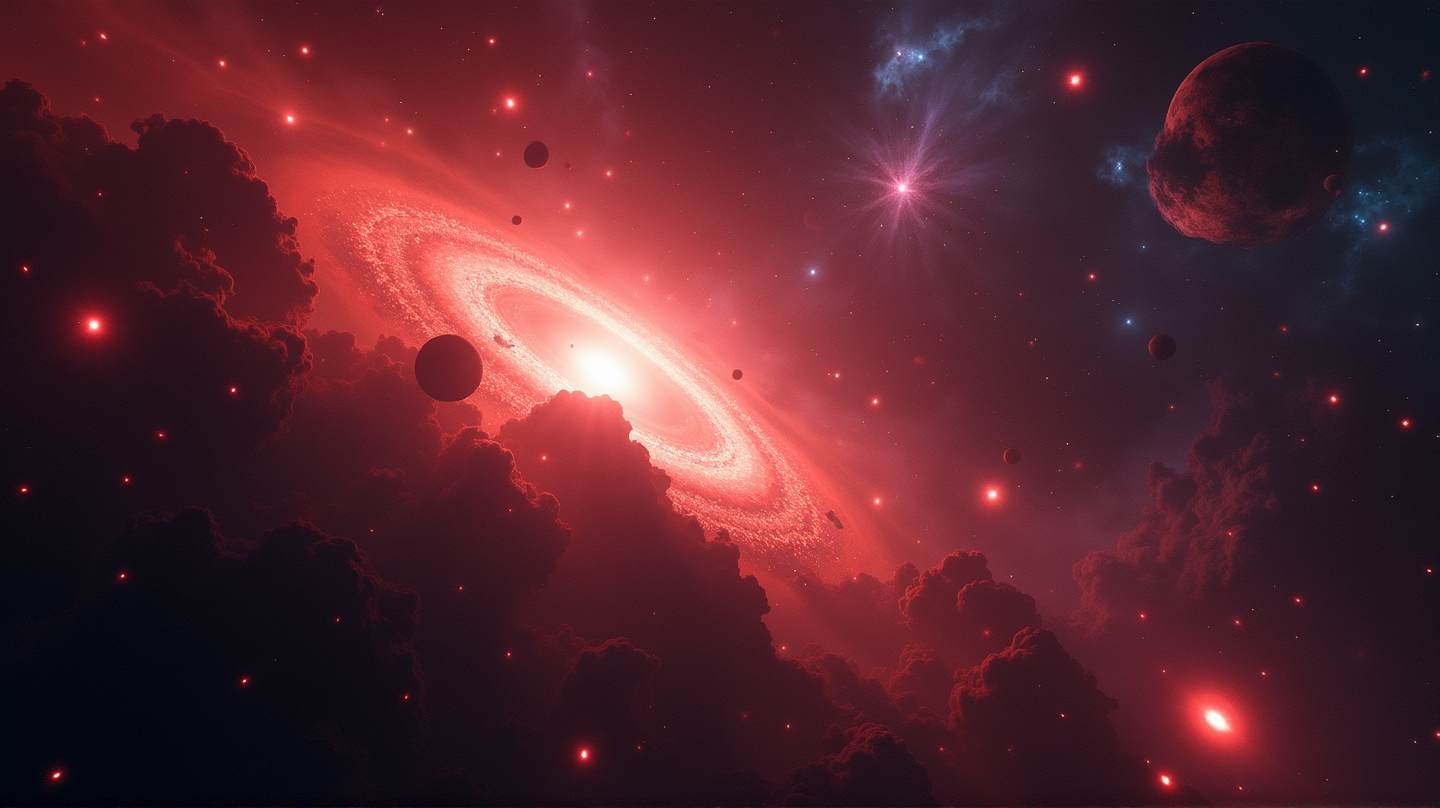Journey Into the Unknown: Discovering 'Black-Hole Stars' Across the Universe
The discovery of 'little red dots' by the James Webb Space Telescope may redefine our understanding of the cosmos. What could these enigmatic objects be?

In a universe filled with mysteries, one discovery has captured the imagination of astronomers worldwide: the “little red dots” that have come to be known as potential “black-hole stars.” Observed by the James Webb Space Telescope, these enigmatic objects challenge our understanding of the cosmic landscape. Have astronomers uncovered a new type of star, or is there more to this cosmic puzzle?
A Cosmic Revelation
The deployment of the James Webb Space Telescope marked a new era in astronomical exploration. With its infrared capabilities, unseen by the human eye, JWST has peered into the far reaches of our universe, unveiling hidden corners and early cosmic events. Among the most intriguing are these dense red dots, which have been referred to evocatively as “rubies” or unsettlingly as “universe breakers.”
The Mystery of the Red Dots
Initially perplexing to astronomers, these red dots sparked a flurry of questions. Were these old, tiny galaxies, or something far more complex? It quickly became apparent that they were emitting immense energy, unmatched by their relatively small size. Could they be lost relics from an ancient universe? As stated in The Sydney Morning Herald, these little red dots may indeed represent a new type of stellar object.
The Black-Hole Star Hypothesis
One compelling theory suggests these objects might be black-hole stars: enormous, chaotic clouds of gas surrounding supermassive black holes, creating a thick, star-like structure. Karl Glazebrook and his team see them as “aborted galaxies,” where gas moves at extreme speeds without forming stars. A dazzling yet silent testament to cosmic forces, lacking in X-ray emissions.
Revisiting Old Theories
The discovery also revives the long-held “quasi-stars” theory, a concept of colossal stars from the early universe that may have collapsed into these black-hole stars. A blend of stellar atmospheres and black-hole centers, these objects shine with the heat of a hidden core. Could they explain the birth pangs of our cosmos and help us glimpse the dynamics at play in an early universe?
A New Look at the Universe
Though these theories are still speculative, the finding of little red dots is a poignant reminder of the mysteries lurking in the cosmos. As Dr. Rebecca Davies puts it, these phenomena hint at many more nascent black holes waiting to be discovered. With each new observation, we edge closer to understanding our universe’s early tumultuous periods.
The journey into the unknown continues as astronomers utilize every tool and collaboration to unlock the secrets held by these black-hole stars. The cosmos awaits, with many mysteries left to unravel.

